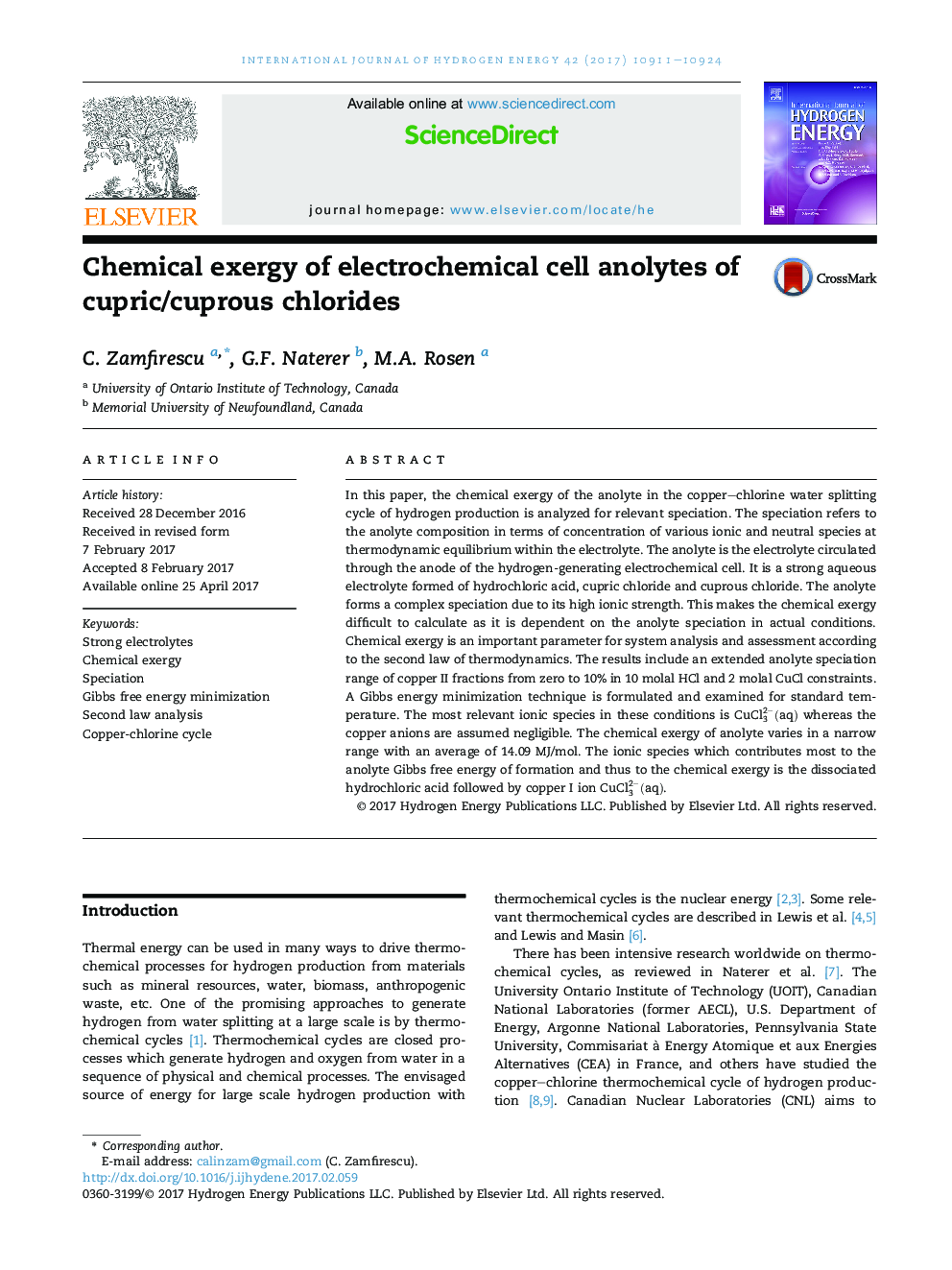| کد مقاله | کد نشریه | سال انتشار | مقاله انگلیسی | نسخه تمام متن |
|---|---|---|---|---|
| 5145698 | 1497361 | 2017 | 14 صفحه PDF | دانلود رایگان |
عنوان انگلیسی مقاله ISI
Chemical exergy of electrochemical cell anolytes of cupric/cuprous chlorides
دانلود مقاله + سفارش ترجمه
دانلود مقاله ISI انگلیسی
رایگان برای ایرانیان
کلمات کلیدی
موضوعات مرتبط
مهندسی و علوم پایه
شیمی
الکتروشیمی
پیش نمایش صفحه اول مقاله

چکیده انگلیسی
In this paper, the chemical exergy of the anolyte in the copper-chlorine water splitting cycle of hydrogen production is analyzed for relevant speciation. The speciation refers to the anolyte composition in terms of concentration of various ionic and neutral species at thermodynamic equilibrium within the electrolyte. The anolyte is the electrolyte circulated through the anode of the hydrogen-generating electrochemical cell. It is a strong aqueous electrolyte formed of hydrochloric acid, cupric chloride and cuprous chloride. The anolyte forms a complex speciation due to its high ionic strength. This makes the chemical exergy difficult to calculate as it is dependent on the anolyte speciation in actual conditions. Chemical exergy is an important parameter for system analysis and assessment according to the second law of thermodynamics. The results include an extended anolyte speciation range of copper II fractions from zero to 10% in 10 molal HCl and 2 molal CuCl constraints. A Gibbs energy minimization technique is formulated and examined for standard temperature. The most relevant ionic species in these conditions is CuCl32â(aq) whereas the copper anions are assumed negligible. The chemical exergy of anolyte varies in a narrow range with an average of 14.09Â MJ/mol. The ionic species which contributes most to the anolyte Gibbs free energy of formation and thus to the chemical exergy is the dissociated hydrochloric acid followed by copper I ion CuCl32â(aq).
ناشر
Database: Elsevier - ScienceDirect (ساینس دایرکت)
Journal: International Journal of Hydrogen Energy - Volume 42, Issue 16, 20 April 2017, Pages 10911-10924
Journal: International Journal of Hydrogen Energy - Volume 42, Issue 16, 20 April 2017, Pages 10911-10924
نویسندگان
C. Zamfirescu, G.F. Naterer, M.A. Rosen,